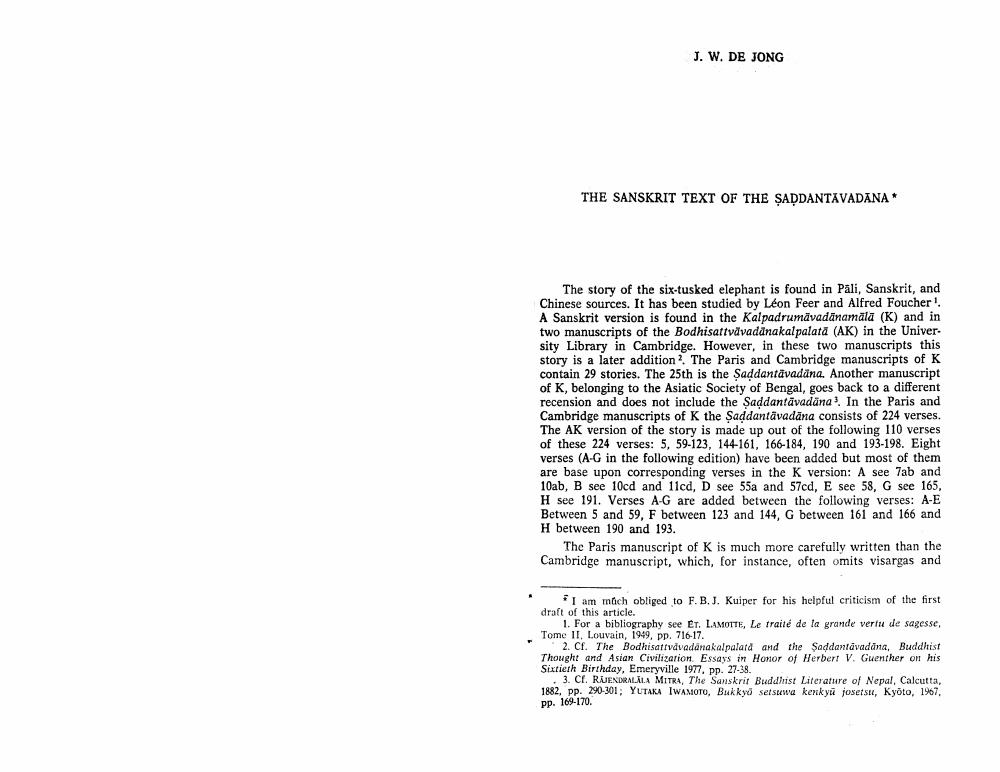________________
J. W. DE JONG
THE SANSKRIT TEXT OF THE SADDANTAVADANA *
The story of the six-tusked elephant is found in Päli, Sanskrit, and Chinese sources. It has been studied by Léon Feer and Alfred Foucher'. A Sanskrit version is found in the Kalpadrumāvadānamālā (K) and in two manuscripts of the Bodhisattvävadänakalpalată (AK) in the Univer Isity Library in Cambridge. However, in these two manuscripts this story is a later addition. The Paris and Cambridge manuscripts of K contain 29 stories. The 25th is the Ṣaddantävadäna. Another manuscript of K, belonging to the Asiatic Society of Bengal, goes back to a different recension and does not include the Saddantavadana3. In the Paris and Cambridge manuscripts of K the Saddantävadāna consists of 224 verses. The AK version of the story is made up out of the following 110 verses of these 224 verses: 5, 59-123, 144-161, 166-184, 190 and 193-198. Eight verses (A-G in the following edition) have been added but most of them are base upon corresponding verses in the K version: A see 7ab and 10ab, B see 10cd and 11cd, D see 55a and 57cd, E see 58, G see 165, H see 191. Verses A-G are added between the following verses: A-E Between 5 and 59, F between 123 and 144, G between 161 and 166 and H between 190 and 193.
The Paris manuscript of K is much more carefully written than the Cambridge manuscript, which, for instance, often omits visargas and
I am much obliged to F. B. J. Kuiper for his helpful criticism of the first draft of this article.
1. For a bibliography see ET. LAMOTTE, Le traité de la grande vertu de sagesse, Tome II, Louvain, 1949, pp. 716-17.
2. Cf. The Bodhisattvävadanakalpalatd and the Saddantāvadāna, Buddhist Thought and Asian Civilization. Essays in Honor of Herbert V. Guenther on his Sixtieth Birthday, Emeryville 1977, pp. 27-38.
3. Cf. RAJENDRALALA MITRA, The Sanskrit Buddhist Literature of Nepal, Calcutta, 1882, pp. 290-301; YUTAKA IWAMOTO, Bukkyo setsuwa kenkyu josetsu, Kyoto, 1967, pp. 169-170.




